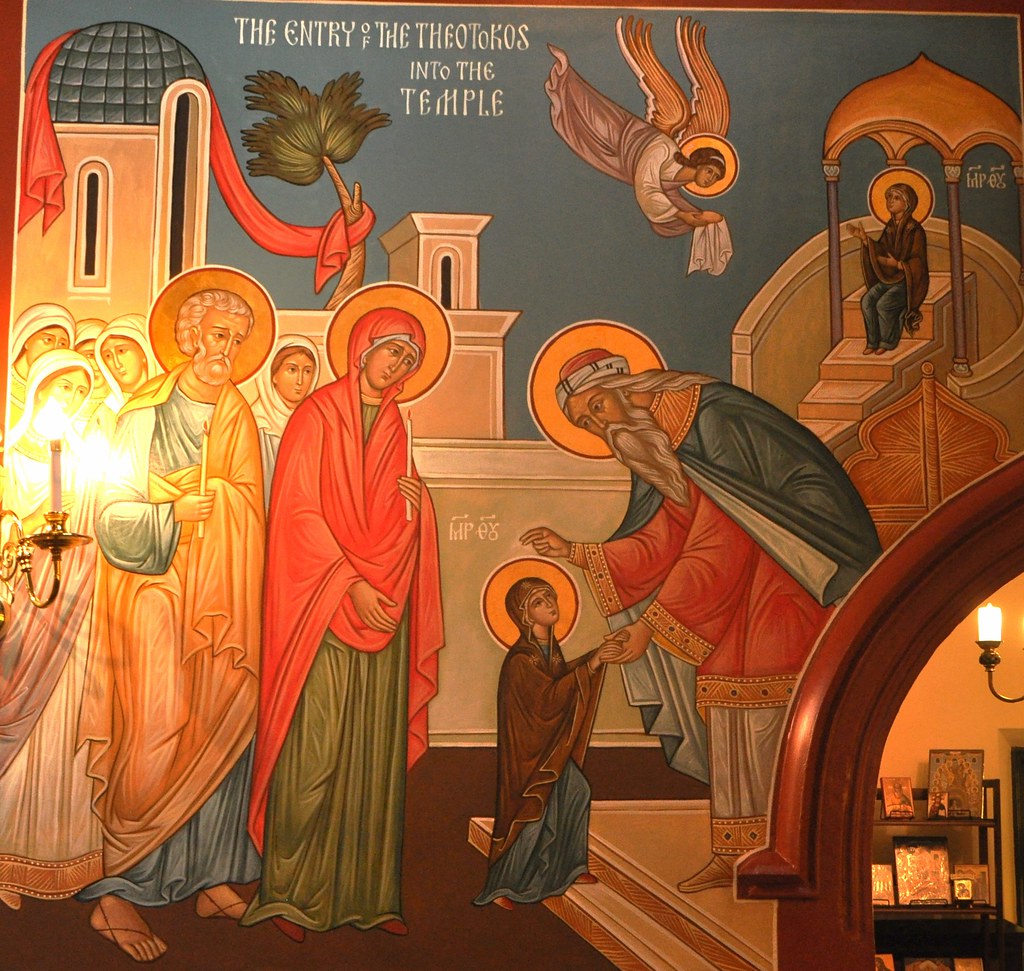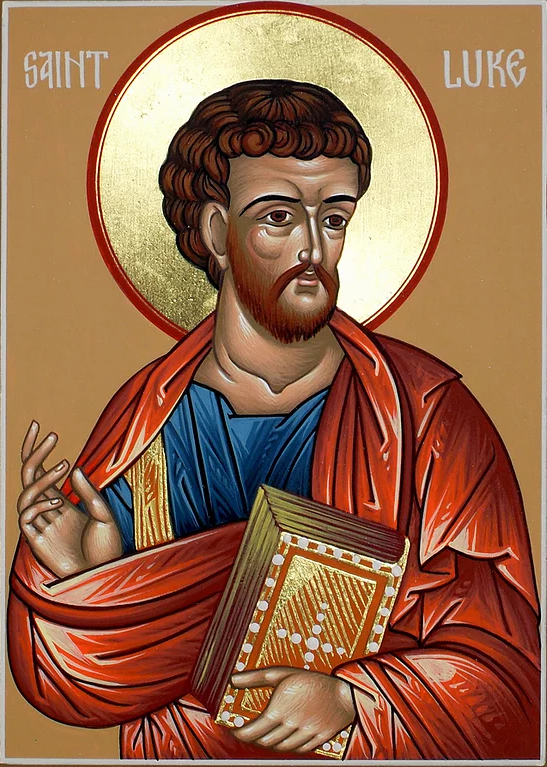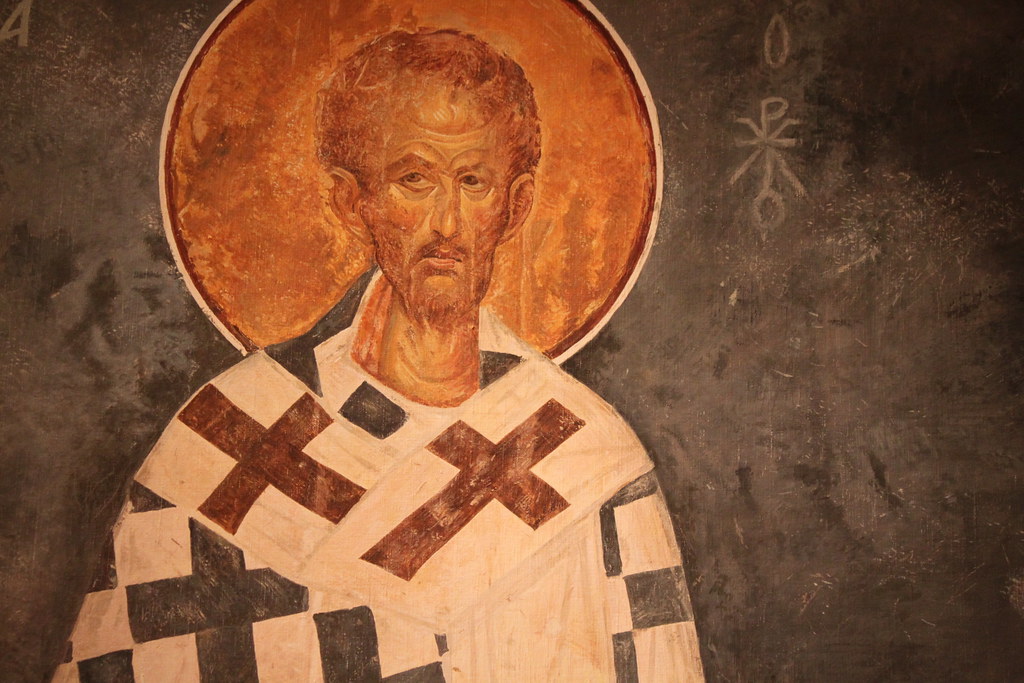Now even the first covenant had regulations for worship and an earthly sanctuary. For a tent was prepared, the outer one, in which were the lampstand and the table and the bread of the Presence; it is called the Holy Place. Behind the second curtain stood a tent called the Holy of Holies, having the golden altar of incense and the ark of the covenant covered on all sides with gold, which contained a golden urn holding the manna, and Aaron’s rod that budded, and the tables of the covenant; above it were the cherubim of glory overshadowing the mercy seat. Of these things we cannot now speak in detail. These preparations having thus been made, the priests go continually into the outer tent, performing their ritual duties; but into the second only the high priest goes, and he but once a year, and not without taking blood which he offers for himself and for the errors of the people.
Hebrews 9: 1-7 (Epistle of the Entrance of the Virgin Mary)
The birth and early life of the Virgin Mary is not part of the four Gospels. Rather, there is an apocryphal Gospel known as the Protevangelion of James. (There were more “gospels” than just Matthew, Mark, Luke and John—these “apocryphal” gospels are not recognized as books of the Bible but do have validity in Orthodox theology. There are two apocryphal Gospels, the Gospel of James and the Gospel of Nikodemos. Then there are “gospels” known as “gnostic” gospels, which are heretical and condemned by the church. These include the gnostic “gospels” of Mary Magdelene and Thomas.) The Protevangelion of James is allegedly attributed to James, the brother of the Lord, though because it cannot be concretely attributed to him, or just oral tradition codified by him, this is another reason it does not appear in the canon of Scripture, the Bible. “Proto” means “first” and “evangelion” means “gospel.” The “Protevangelion” written by James recounts things that happened before the ministry of Christ, such as the birth of the Virgin Mary, her service in the temple, her betrothal to Joseph, up to the birth of Jesus.
The parents of the Virgin Mary, were Joachim and Anna. They weren’t able to have children. In their old age, they made a promise to God that if He would give them a child, they would dedicate that child back to God. God told them through an angel that they would give birth to the one who would become the Mother of the Lord.
When their daughter, Mary, turned three years old, it was time to make good on their promise. Joachim gathered the young girls of their neighborhood to go before Mary carrying torches. Mary focused on the bright lights and didn’t cry as she was led away from her home. When she saw the temple she was being led to, she ran ahead of the torch bearers. She was received into the temple by the High Priest Zacharias, who recognized that this was a special girl. He carried her into the Holy of Holies, a place where only the high priest was allowed to go and only once a year, “and not without taking blood which he offers for himself and for the errors of the people.” (Hebrews 9:7) This “blood” refers to the blood of a heifer which was offered annually at the altar by the high priest. Zacharias took the Virgin Mary and placed her at the steps of the altar. She was to sacrifice her life in order to give birth to the One Who would sacrifice Himself for all the people, Jesus Christ. This is why she is referred to as a “heifer” in our hymnology. When she was placed on the altar steps, the grace of the Holy Spirit descended on her. Mary would remain in the temple until she reached the age of marriage, which at that time was about fourteen. After that time, she was entrusted to Joseph, to who she was betrothed.
The icon of the Feast of the Entrance shows Mary being presented by her parents, Joachim and Anna, into the temple. In the background are the young maidens who escorted her to the temple. And in the corner, there is an angel ministering to the Virgin Mary in the temple.
There are three lessons from this feast: First, the faith of Joachim and Anna, who did not lose faith despite not being able to have children. Second, there is the obedience of the Virgin Mary, both to her parents and to God’s plan, that she left her home and her parents and entered into the service of the Temple. And third, there is God’s overall plan for our salvation, prefigured in this feast. For the Virgin Mary entered into the Holy of Holies, where only the high priest could go, and dedicated her life in sacrifice to God’s plan, in anticipation of the sacrifice that the Son she bore, Jesus Christ, would sacrifice Himself for the salvation of all.
There are a few similarities between us and the Virgin Mary. We are each called to be “Theotokos”, a bearer of God. We carry God in us through our receiving of the Eucharist. We are also each called to live our lives for God, and do our part in His plan for the salvation of all. Joachim and Anna did their part, the Virgin Mary did her part, and now it is up to us to do our part. We should present ourselves in the temple each week, eager to learn, eager to serve, and to do so with great joy. The Protevangelion of James recounts that the Virgin Mary, at this point three years old, was dancing for joy when she entered the Temple. Our hearts should also leap for joy each week when we enter into the temple.
Today the all-blameless Virgin is led to the Temple, to become the abode of God the King of all and Nourisher of our whole life. Today the most pure sanctuary is introduced into the Holy of Holies as a heifer three years old. Let us cry out to her as once did the Angel: Rejoice, only blessed among women. (Doxastikon of Orthros, Feast of the Entrance of Virgin Mary, Trans. by Fr. Seraphim Dedes)
Live a life that reflects that we bear Christ in us. Play your part in God’s plan for the salvation of the world. Do it with joy.



